- Opinion
- Posted
Smart Growth

With an economy fuelled by a government approach to planning that many people equate to a road building and house building free for all, it should come as no surprise that quality of life suffers, with many Irish people dependant on cars for everything from school runs, to shopping to getting to work. However, as Dorothy Stewart, Researcher with the Futures Academy, DIT, explains, an informed planning approach is possible that reduces car dependency and, as she observed from a recent road closure, helps foster community spirit.
The energy was palpable as the convoy of parents and children were drawn like magnets towards the school gates on this autumn morning. Bicycles, tricycles, scooters and a multitude of school bags ambled down the road in a most convivial fashion. The closure of a local road for road maintenance warranted this alternative route for parents to bring their children to school. The road is normally choc-a-bloc with motor vehicles of every type, size and make emitting noxious gases into the atmosphere. People were now forced to walk approximately 15-20 minutes from home to drop their children off to school. Ironically, it takes less time to walk than to drive this short distance during the school term. The usual noise of engines was replaced with the chuckles and giggles of this unusual social gathering, coupled with, 'hey there, haven't seen you in person for so long', and 'oh wow! you only live down the road from me and we never see each other'. Children were interacting with ease while walking, with others racing on their bikes and scooters, echoes of "stop at the traffic lights" to be heard from parents in the background. Despite not having a choice but to walk, nobody looked exhausted; everyone in fact strolled or cycled along at a leisurely pace and visibly enjoyed the encounters with other community members on the way. The lollipop lady, now somewhat redundant, normally there to ensure the safe crossing of toddlers across the road, looked decidedly relaxed and happy to navigate the children across the road on their little environmentally friendly vehicles, whilst exchanging the odd joke and an abundance of smiles.

Honeybourne First School, a pilot school in Worcestershire now in the second year of a 'Walking Bus' scheme, which aims to reduce car dependency, with added health and community benefits.
Today there is much research that suggests children; in particular girls do not get enough physical exercise. Research also suggests that the incidence of childhood obesity and diabetes are on the increase in Ireland. Research findings published in 2005 in The British Medical Journal warns of the dangers to the health of pedestrians and the planet attributed to the use of sports utility vehicles (SUVs). Furthermore, quality of life issues and community spirit continually enter the debate in discussions about modern day living. People however, do have choices. Indeed, for some people the distance from home to school is too far to walk and Ireland’s inclement weather can sometimes act as a barrier to walking or cycling. Nonetheless, for many, walking their children to school is a viable, healthier and potentially enriching experience for parent and child alike. Perhaps, like people everywhere, people do things a certain way and don't often consider an alternative way of doing things. Nonetheless, is it really a more viable option to sit bumper to bumper behind the wheel of a car with children who have been transformed into octopuses in the back? Allied to this is the frantic scramble to get that parking spot right at the front of the school gates, but no, someone is there just in front of you. A drive around the corner and the challenge of parking on the main road becomes necessary. Add to this the need to get the children out of the car, schoolbags and all, ensuring you don't decapitate the cyclist passing by, not to mention the trucks and other vehicles on the main road at this early morning peak time.
One month over time and three months since the maintenance work commenced the road re-opened to vehicular traffic. Parents and children were again in their cars. Ironically, it is no longer a safe option to walk, as one must now navigate a footpath that serves as a school car park thus reducing the footpath capacity. For the person who may decide to walk with a buggy or to cycle, they can forget about that until the school run is over after 9.30am.
It could be argued that the above scenario is mirrored throughout many communities in Ireland today. However, without reinventing the wheel, there is another way. Advocates of the concept of Smart Growth propose a myriad of micro measures to achieve more walkable and pedestrian friendly communities that include traffic calming measures, improved pedestrian and cycling facilities and trees for shelter/buffer from the road. These measures can go some way to alleviating current challenges associated with tasks like dropping children off to school. Older schools can benefit from a retro fit of these measures, whilst new schools can be designed in a way that encourages walking and cycling as alternative modes to get children to school where feasible and possible. Allied to this, at the design stage school sites can be centred in the community and made more accessible to pedestrians. Streets leading to school sites can be designed to include full sidewalk or walkway improvements and other elements that contribute to pedestrian safety and comfort. This approach of course can be applied to other buildings used by the community, ranging from shops, to municipal buildings, to workplaces.
The concept of Smart Growth emerged in the United States (US) during the 1990s from research undertaken by the Urban Land Institute (ULI). At this time the ULI was looking at ways to deal with the problems arising from urban sprawl, traffic congestion, school overcrowding and air pollution. The concept also evolved as a reaction to the apparent failure of traditional planning techniques to improve conditions. By 1999 the ULI was of the opinion that Smart Growth had become a hot political debate in communities and states throughout the US (Porter, 2002). Whilst there are many definitions of Smart Growth the ULI describes the underlying objective as follows: 'Smart Growth seeks to identify a common ground where developers, environmentalists, public officials, citizens and others can all find acceptable ways to accommodate growth' (Porter, 2002:4). Smart Growth, as an alternative philosophical and methodological approach towards urban planning calls for greater integration between the economic, environmental and social aspects of planning and development. The concept is comparable to the more broad concept of sustainable development defined as “development that meets the needs of the present without compromising the ability of future generations to meet their own needs” (Bruntland, 1987:8).

Ever increasing Car dependency is all too common in Ireland
In 1996, a broad coalition in the US formed the Smart Growth Network (SGN), with members spanning real estate, the US Environmental Protection Agency (EPA), advocacy and policy-making circles (Tregoning et al, 2002:342). The main objective was to build consensus around land-use issues and ascertain how to provide local officials, planners, developers, preservationists and environmentalists with the necessary tools and information to battle the problems associated with urban sprawl. The SGN identified the principles listed below as necessary to further the concept of Smart Growth:
Mix land uses to incorporate office, retail and residential buildings in a development;
Take advantage of compact building design where appropriate;
Create a range of housing opportunities and choices;
Create walkable communities;
Foster distinctive, attractive communities with a strong sense of place;
Preserve open space, farmland, natural beauty and critical environmental areas;
Strengthen and direct development towards existing communities;
Provide a variety of transport choices;
Make development decisions predictable, fair and cost effective;
Encourage community and stakeholder collaboration in development decisions;
Efficiently manage and expand infrastructure, and;
Encourage infill redevelopment and adaptive use in built-up areas (Tregoning et al, 2002).
Smart Growth is not anti-growth nor is it a panacea. The underpinning ideology of the concept is that a community should fashion its own version of Smart Growth through a shared decision-making process and adapt the concept to unique socio-economic, environmental and political circumstances. The concept embraces a holistic approach that accords with community interests and reasonably balances the various principles that make up Smart Growth in theory. Smart Growth purports to offer solutions to growth management issues with mechanisms such as public policy tools that include fiscal incentives and disincentives. Currently in Ireland policy and strategy objectives are comparable to the principles of Smart Growth as a means to achieve long-term sustainable development. Allied to this is comprehensive planning legislation in Ireland as a means to implement policy. It could be argued that Ireland is now economically, socially and culturally positioned to adopt an alternative, innovative and creative approach to planning and development now and in the future. It follows that if policy and strategy is implemented verbatim that growth can be accommodated in a manner that is economically viable and socially and environmentally responsible.
- Articles
- Opinion
- Smart Growth
- dorothy stewart
- futures academy
- car dependency
- community spirit
- environmentally friendly vehicles
Related items
-
 Passive house or equivalent - The meaning behind a ground-breaking policy
Passive house or equivalent - The meaning behind a ground-breaking policy -
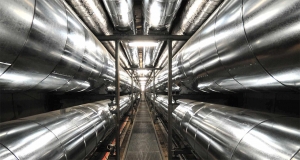 District heating and passive house - are they compatible?
District heating and passive house - are they compatible? -
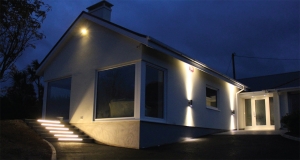 How to stimulate deep retrofit
How to stimulate deep retrofit -
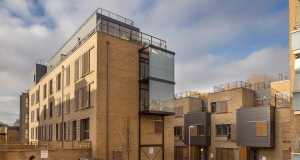 Delivering passive house at scale
Delivering passive house at scale -
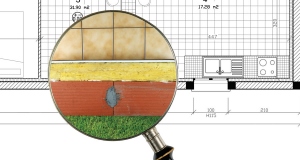 Material impacts
Material impacts -
 Airtightness - the sleeping giant of energy efficiency
Airtightness - the sleeping giant of energy efficiency -
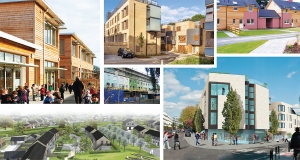 Passive house goes large
Passive house goes large -
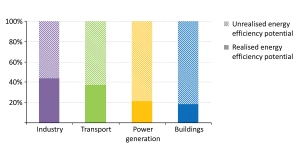 How to rescue retrofit
How to rescue retrofit -
Opinion
-
Thermal bridging
-
Isover awards
-
Carlow A1 upgrade

